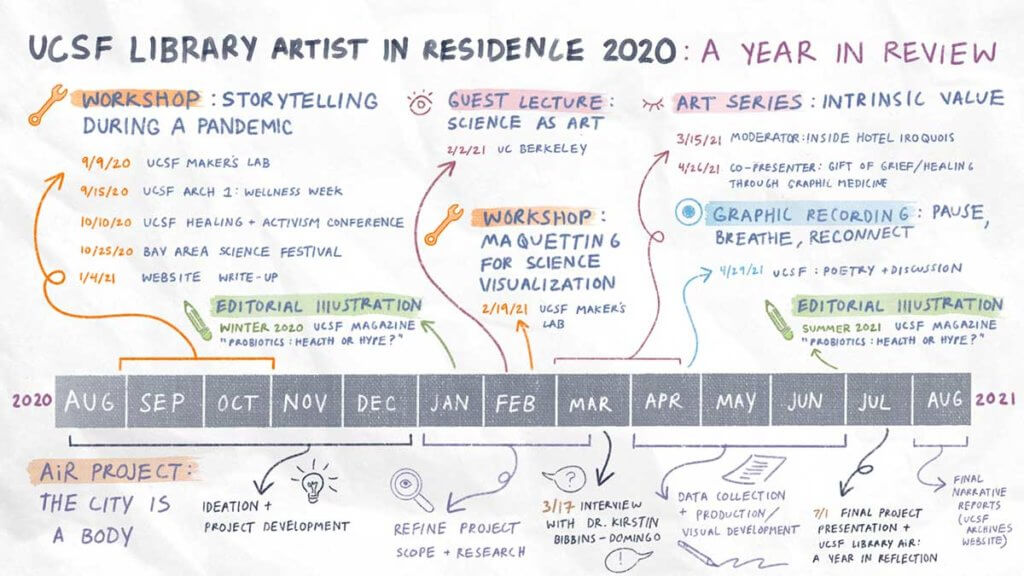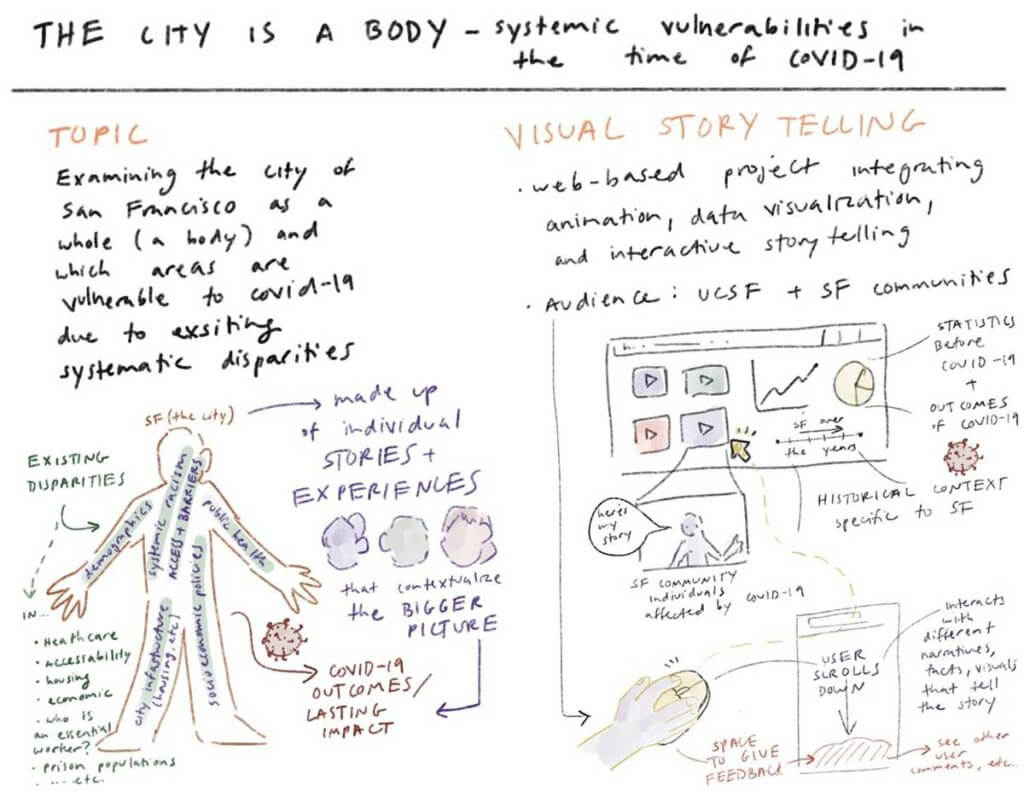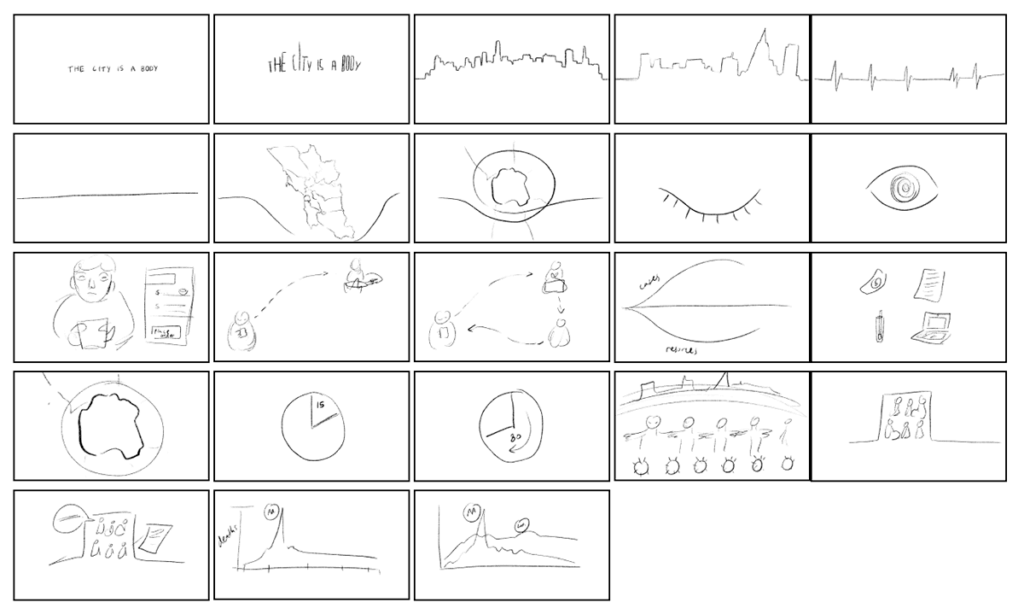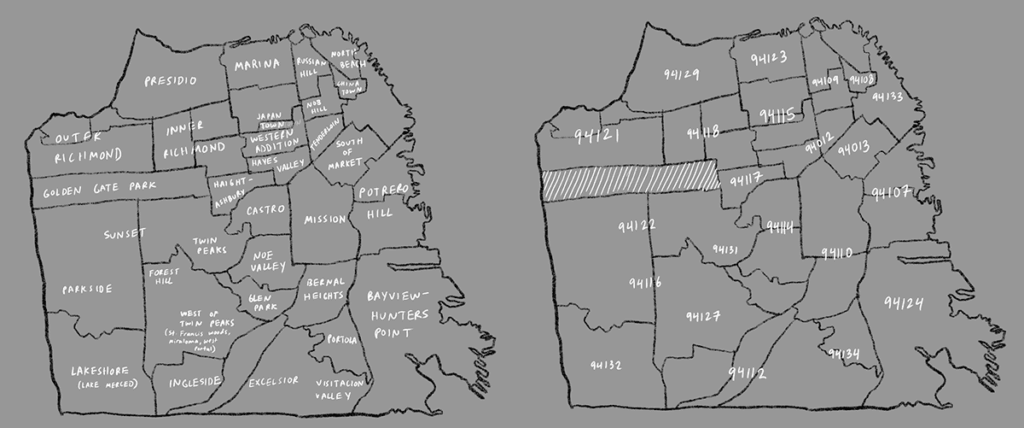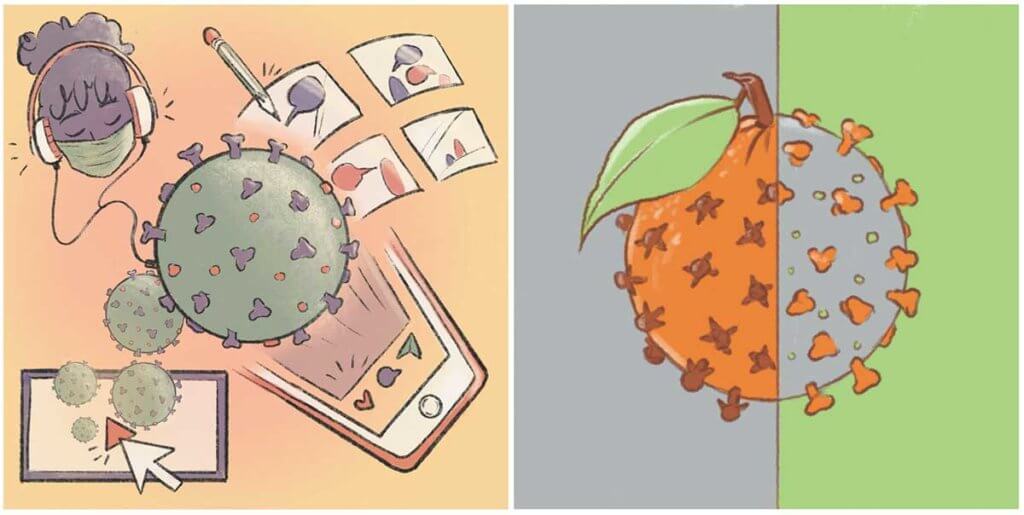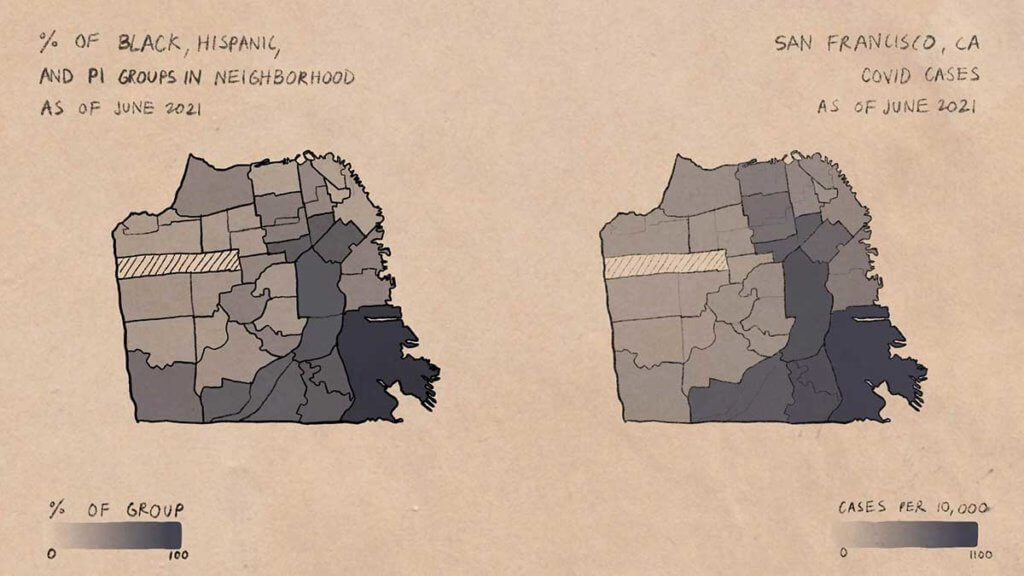This past year I had the wonderful opportunity to be the inaugural UCSF Library Artist in Residence, working on my project The City is a Body and several other workshops and collaborations. As a medical illustrator/scientific communicator by training, I was drawn to this residency because it provided the space to explore the intersection between the arts, sciences, and humanities through the support of the UCSF Archives and Special Collections, and Makers Lab.
The City is a Body
When I first proposed my project idea in February of 2020, COVID-19 infections had just started popping up in the USA, and wouldn’t reach the city of San Francisco until one month later. The initial idea of The City is a Body was to look at San Francisco as a singular entity, “diagnosing” the systemic issues that have plagued the city and workshopping a “prognosis” using visual storytelling during an in-person exhibit. However, when I began my residency later that summer, San Francisco had exceeded 4000 COVID-19 infections and 50 deaths. The residency shifted to accommodate a remote project, and I decided to examine the same theme through the lens of COVID-19 disparities in the city. I was interviewed in June 2020 and shared information about my residency on the UCSF Library website. As a whole, the city has been successful in reducing the impact of the virus, however taking a closer look at the communities that make up the city, vastly different stories emerge.
The City is a Body is an audio-visual project that aims to highlight some of the disparities in COVID-19 outcomes experienced by different communities in San Francisco, and to explore what existing disparities may have played a role. For the final project, I incorporated audio from an interview I conducted with Dr. Kirsten Bibbins-Domingo, Professor and Chair of the Department of Epidemiology and Biostatistics and Vice Dean for Population Health and Health Equity in the UCSF School of Medicine, discussing COVID-19 disparities, and visualizations I created from public data on infections, deaths and other socioeconomic variables. The resulting animation is an introduction to a much more complex story of how systemic racism, access to education, housing, medical care, types of jobs, and other factors all play a role in why certain communities and neighborhoods in San Francisco were hit so much harder during the pandemic.
The City is a Body by Farah Hamade
The first few months of the project involved brainstorming, ideation and flexibility to the ever-evolving pandemic landscape. New data was constantly emerging, but what was clear was the disproportionate effect of the pandemic on communities of color, especially Black, Latinx and Pacific Islander communities. The decision to examine the city of San Francisco as “a body” emerged from the idea that health is measured by the most vulnerable aspect of the whole. Highlighting concerns in communities that are the most vulnerable is crucial to improving the health and outcomes of the whole city.
In March 2021, I had the opportunity to interview Dr. Kirsten Bibbins-Domingo. We discussed many themes related to COVID-19 disparities in San Francisco, including some of the underlying health and socioeconomic disparities affecting different communities, and how that has shaped their experiences during the pandemic. During the interview, Dr. Bibbins-Domingo discussed a key point in “the fact that we [San Francisco] are so good on average that makes it even harder to see the disparities” and that in the end “the response has to be hyper-local and has to be focused on individual needs in particular communities.”
Farah Hamade’s interview with Dr. Kirsten Bibbins-Domingo
Building off of the topics discussed during the interview, I compiled data gathered from public sources on existing disparities across different communities in San Francisco, as well as COVID-19 data. Breaking down the city by neighborhood and zip code, clear patterns emerged correlating many of the systemic disparities experienced by Black, Latinx and other communities of color in San Francisco with the data on COVID-19 cases and deaths in the city. For example, as of June 13th, 2021 the Bayview-Hunters Point neighborhood (zip code 94124) had the highest rate of COVID-19 infections. This is also the neighborhood that has the highest Black and Pacific Islander populations, one of the highest Latinx populations, and the lowest income per capita ($19,770). Many of the individuals in these communities are front-line workers who live in homes with higher average household sizes. As Dr. Bibbins-Domingo stated, the response to these disparities has to be localized and there has been some success in targeting these vulnerable communities. For example, the San Francisco Department of Public Health (SFDPH) had the highest rate of vaccines administered in Bayview-Hunters Point.
The final production phase involved finalizing a script, storyboard, illustrating the individual components, animating, and compositing all the final pieces together. The script was a combination of snippets of my interview with Dr. Kirsten Bibbins-Domingo and my own narration to add context to the story. It was difficult cutting down the interview to a few key points, and I hope I can expand on the other topics discussed in the future. Once a script was finalized, I began roughly storyboarding the visual metaphors and main data visualizations I wanted to include. Each visual element was then illustrated digitally by hand in Procreate and Photoshop to be later animated in After Effects.
One of the key components of the animation was the visualization of the map of San Francisco by neighborhood. In order to create a single map that could be used to visualize different o data sets, each neighborhood was individually illustrated so that its color opacity could reflect a value from 0 – 100 %. This allowed me the flexibility to create multiple maps that could then be compared across different variables, such as demographic breakdown by neighborhood in contrast to COVID-19 cases. The clear visual similarities in the maps across different variables reiterated the point that many socioeconomic and health disparities are interconnected and compound each other, especially during the COVID-19 pandemic.
The final project was animated in After Effects and presented on July 1st 2020 as part of the UCSF Library and Makers Lab where I also reflected on the Artist in Residence experience as a whole. Overall, I hope the project is part of a greater push to continue understanding the short and long term effects of the pandemic on San Francisco’s most vulnerable communities.
Other projects and collaborations
During my residency, I also hosted workshops that allowed me to introduce others to the field of medical and scientific illustration, as well as collaborating on other projects as part of the UCSF community.
- In the fall of 2020, I hosted my first workshop “Storytelling During a Pandemic,” where I discussed various storytelling mediums and how they pushed the discussion on COVID-19.
- In February 2021, I hosted my second workshop “Maquetting for Science Visualization” which explored how maquettes have been utilized by scientific illustrators to help bring to life that which is not easily observed.
- In the spring of 2021, I was invited to be part of the “Intrinsic Value” art series, a series celebrating BIPOC (Black, Indigenous, People of Color) artists in the Bay Area with the theme of “unlikely connections.” I moderated the first event which screened the original documentary “Inside Hotel Iroquois (2019), followed by a conversation with the members of Skywatchers. I also co-presented for the third event “Gift of Grief/Jedo’s Unknown: Healing through Graphic Medicine” with Eki Shola, where we discussed healing grief through the creation of music and art.
- In April 2021, I illustrated a graphic recording visual to accompany the event “Pause, Breathe, and Re-Connect: Poetry and Discussion (2021)” hosted by UCSF physician and poet Michelle-Linh Nguyen which explored the theme of humanity in medicine.
- I created editorial illustrations/animations for the UCSF magazine myth buster series, for their articles “Probiotics: Health Hack or Hype?” and “Brain Boosters: Can Puzzles and Pills Make US Sharper?”.
- In September 2020, I was also interviewed by KQED on The City is a Body project.
Overall this residency was a year of ideation, creation and collaboration where I was able to explore my own craft of scientific/medical visualization while working with other creatives, physicians, and researchers at UCSF. I deeply appreciate the support I received from the UCSF Library Artist in Residence Committee, notably Polina Ilieva, head of the UCSF Archives and Special Collections, and Dylan Romero, head of the UCSF Makers Lab who provided yearlong feedback and assistance. I look forward to the upcoming Artist in Residence projects, the next of which is Pantea Karimi’s UCSF Library Artist in Residence 2021 project exploring medicinal botany and art.
